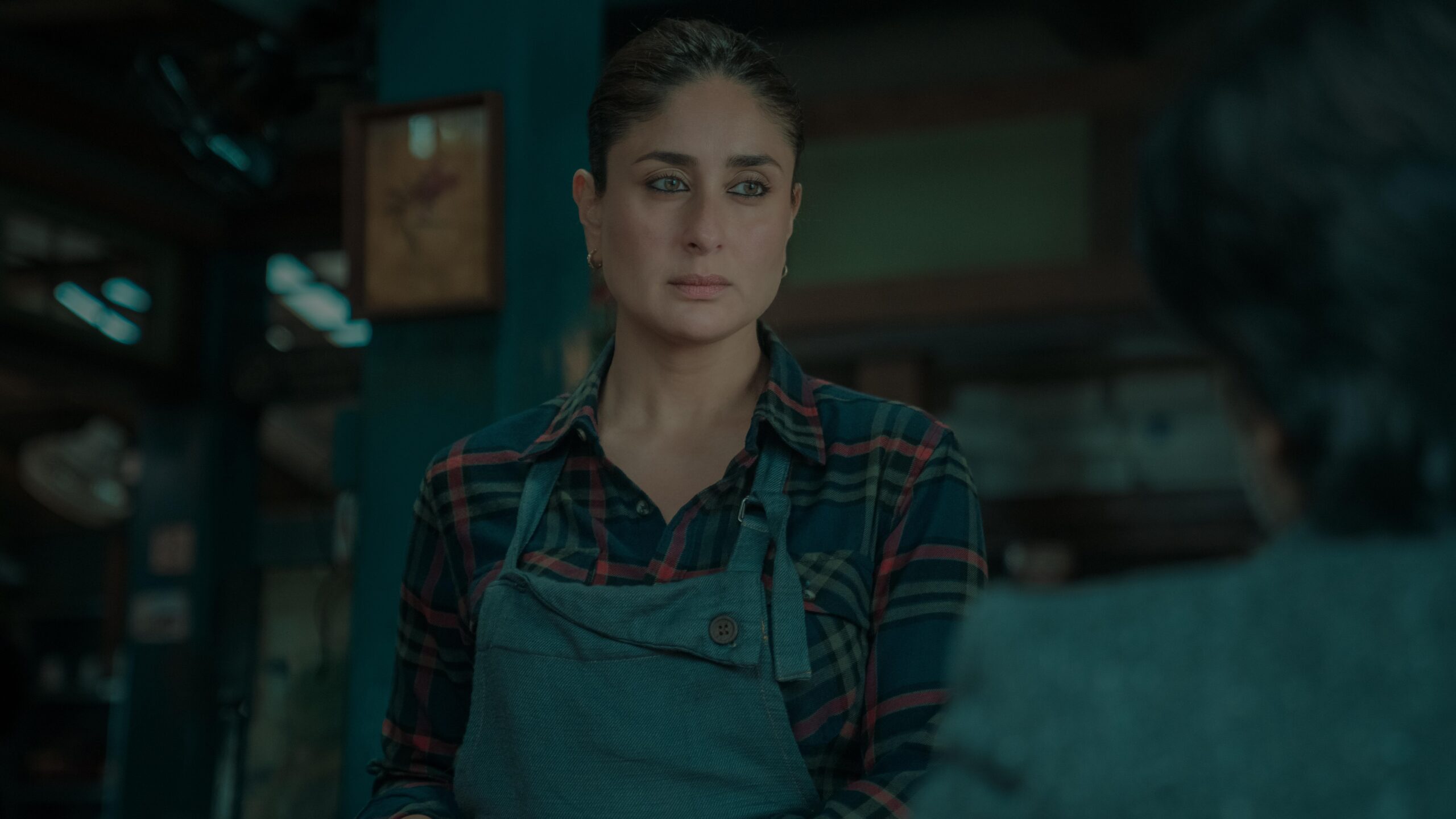Diwa Shah‘s debut feature film, Bahadur the Brave (2023), takes place in an Indian hill station town amid the COVID-19 pandemic. As a result, many migrant workers, especially from Nepal, have returned to their hometowns owing to the statewide lockdown. This has given rise to a labor crisis in the region. The protagonist, Hansi (Rupesh Lama), a migrant laborer, sees this moment of shortage of laborers as an opportunity to enhance his income. His brother-in-law, Dil Bahadur (Rahul Mukhia), wants Hansi to return to his family. But Hansi is determined to stay and make the most of the situation. Dil Bahadur and Hansi get employed at a warehouse, where they discover illicit alcohol being stored. Unable to resist their temptation, they decide to take a small amount for themselves. The scenario worsens when the owner accuses Dil Bahadur of stealing, and Hansi finds it an opportunity to get rid of him. He suggests he go back to Nepal, or else the cops will put him behind bars. Bahadur is left with no choice but to leave the region immediately. However, he has a condition that Hansi will also have to accompany him on the journey back home. But Hansi has a plan up his sleeve, the implementation of which will make him regret it in the future.
The mundanity of the situation and the profundity of the action are delicately balanced in the film with an overtly realistic tone. Hansi is a hardworking Nepali migrant laborer working on Indian soil. Despite his portrayal as a gentle and subservient employee, we also explore his other traits. He is a serial liar and manipulator. Though he seems to be exploited in various roles, such as carrying sacks of grain or working as a house help, he astutely impresses an inspector by highlighting the essential role of migrant workers in delivering cylinders to people’s homes. Such divergent characteristics provide the challenges and weaknesses of Nepali migrant workers, emphasizing the compromised conditions they encounter while also demonstrating their tenacity and humanity. It is also a thought-provoking remark on the socio-economic dynamics of an unjust society as well as a powerful commentary on the resilience and strength of these individuals in the face of adversity. The filmmaker also displays her ability to seamlessly blend moments of comedy with the harsh realities faced by Nepali migrant workers. The interplay of lighthearted and serious moments creates a compelling and significant impression that resonates with viewers and sheds light on the complexities of the human experience.

Diwa shows a great deal of confidence in her refusal to overstate the emotional stakes or sweep the story towards unnecessary melodrama. Instead, she skillfully maintains a balanced tone that allows the audience to fully immerse themselves in the story without feeling overwhelmed. This approach not only showcases her storytelling prowess but also highlights his understanding of the power of subtlety in evoking genuine emotions. The empathetic approach captures the complexities of navigating one’s identity in a diverse society, highlighting the challenges faced by individuals who feel like outsiders. By delving into the basic human emotions of an ordinary citizen in a foreign place, the film fosters a deeper understanding of the universal desire for acceptance and connection. The filmmaker skillfully weaves these small moments into the larger narrative, highlighting the interconnectedness of individuals and their shared experiences. Dil Bahadur and Hansi secretly enjoy a man who has been arrested for violating the lockdown regulations, a group of men searching for firewood in a forest at dusk, Hansi and him making tea, playing cards, and working as a house help. Through these ordinary activities, they find solace and a sense of normalcy amid the chaos and uncertainty of the situation due to the pandemic. At the same time, the final moment of the film reminded me that life can change in an instant and that even seemingly insignificant actions can have profound consequences.
Bahadur the Brave is also an intelligent character study that puts into contrast Hansi and Dil Bahadur’s personalities and motivations. Hansi has come to terms with the unfortunate reality that, as a foreign laborer. It can be ascertained that the harsh practicality of his existence has compelled him to seek help in fabrication as a means of survival. Dil Bahadur is also a hard-working laborer who is determined to improve his circumstances and provide for his family. But he does not realize the fact that without any work, he can’t help his family or contribute to their well-being. So, at the end of the film, when he takes a desperate step to reach his home, we can feel the weight of his struggle and empathize with his determination to provide for his loved ones. Ultimately, as the news reaches Hansi, a devastated realization puts him into the throes of guilt. He begins to question his choices and the consequences they have had for those he cares about. We can only assume that as time goes on, his materialistic and carefree outlook begins to crumble and is replaced by a profound sense of regret and a desire to make things right. A realization that might haunt Hansi for the rest of his life. A moral dilemma or a crisis of conscience. The simplicity and subtlety of the theme emphasize deep directorial wisdom.

The unobtrusive camerawork by Modhura Palit maintains the focus on the characters and the story and captures the fleeting spirit of the small town setting, showcasing the ease and beauty of daily life. The sound design complements the visuals, not only enhancing the visual experience but also bringing the viewers right into the center of the rustic setting and giving it life. Full credit goes to Rakesh KJ, Thomas Ajay Abraham and Jishnu Dev for creating such an intimate atmosphere. Viraj Zunjarrao‘s editing decisions use a rhythmic flow of visual images to contrast hope and despondency beautifully.
The carefully nuanced central performances by Rupesh Lama and Rahul Mukhia convincingly suggest the camaraderie between Hansi and Dil Bahadur with the smallest gesture and slightest glance. In its best moments of quiet contemplation and piercing emotion, Through their understated performances and quiet moments of introspection, the film explores themes of companionship and the profound impact that human connection can have on our lives.
Bahadur the Brave is a meticulously observed, emotionally shattering piece of social realism tinged with a subtle feeling of loss and loneliness. It is writer/director Diwa Shah’s polished and gently enchanting debut feature. The film’s sluggish pace and humble nature may not be to everyone’s taste. But Diwa rewards the viewer with a film whose warm humanity should allow it to resonate with a broad audience. With its raw performances and unflinching portrayal of societal issues, the film leaves a lasting impact on its audience, provoking thought and reflection long after the credits roll. It leaves a lasting impression by bringing attention to the importance of creating an equitable society for all individuals, regardless of their background or circumstances.
Bahadur the Brave recently premiered in the New Directors Competitive Section at the 71st San Sebastián Film Festival.




